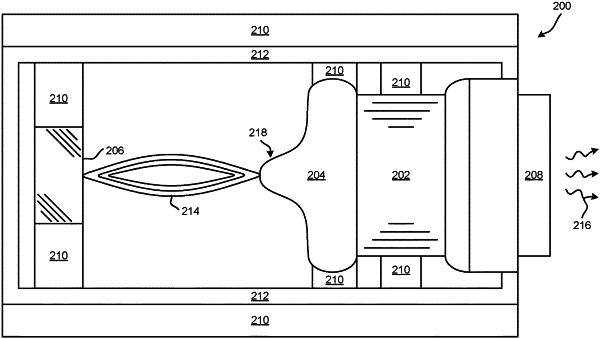| CPC H05H 3/06 (2013.01) [G21G 4/02 (2013.01)] | 13 Claims |

|
1. A method for producing neutrons, the method comprising:
producing a voltage of negative polarity of at least −100 keV on a surface of a deuterated or tritiated target in response to a temperature change of a pyroelectric crystal of less than about 40° C., the pyroelectric crystal having the deuterated or tritiated target coupled thereto;
pulsing a deuterium ion source to produce a deuterium ion beam;
accelerating the deuterium ion beam to the deuterated or tritiated target, wherein accelerating the deuterium ion beam is achieved by using an ion accelerating mechanism comprising a pyroelectric stack accelerator having a first thermal altering mechanism for changing a temperature of the pyroelectric stack accelerator; and
directing the deuterium ion beam onto the deuterated or tritiated target to make neutrons using at least one element selected from the group consisting of: a voltage of the pyroelectric crystal and a high gradient insulator (HGI) surrounding the pyroelectric crystal.
|